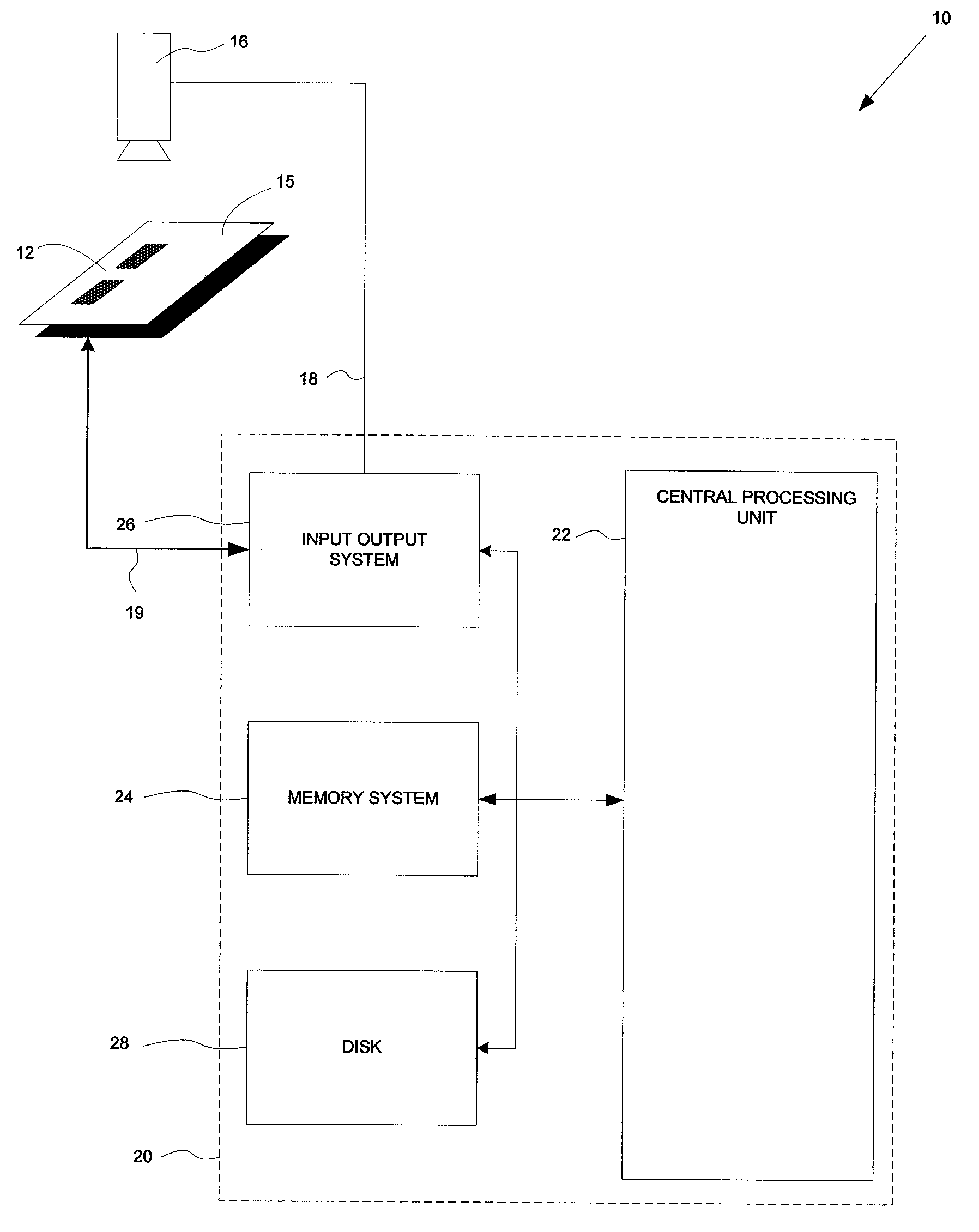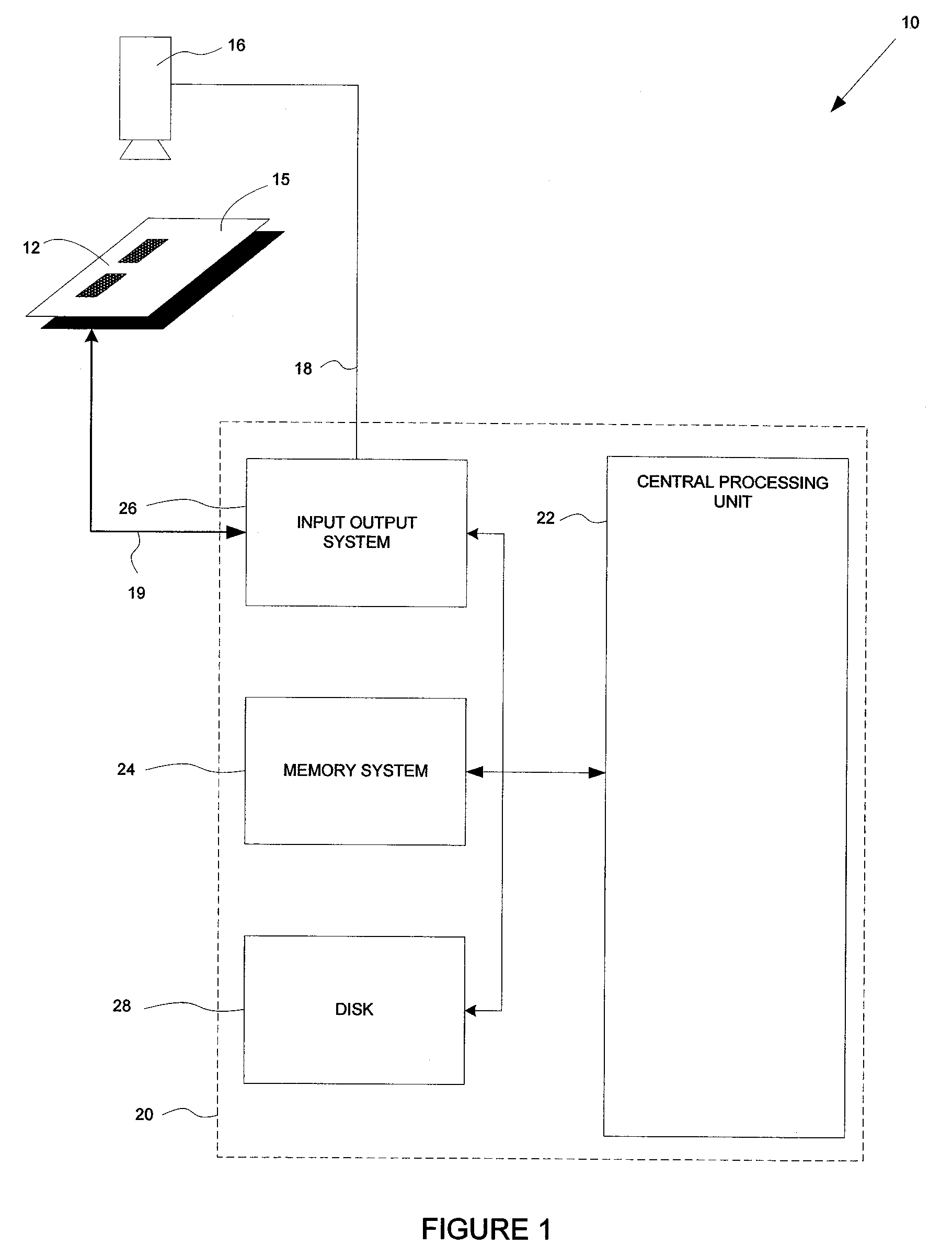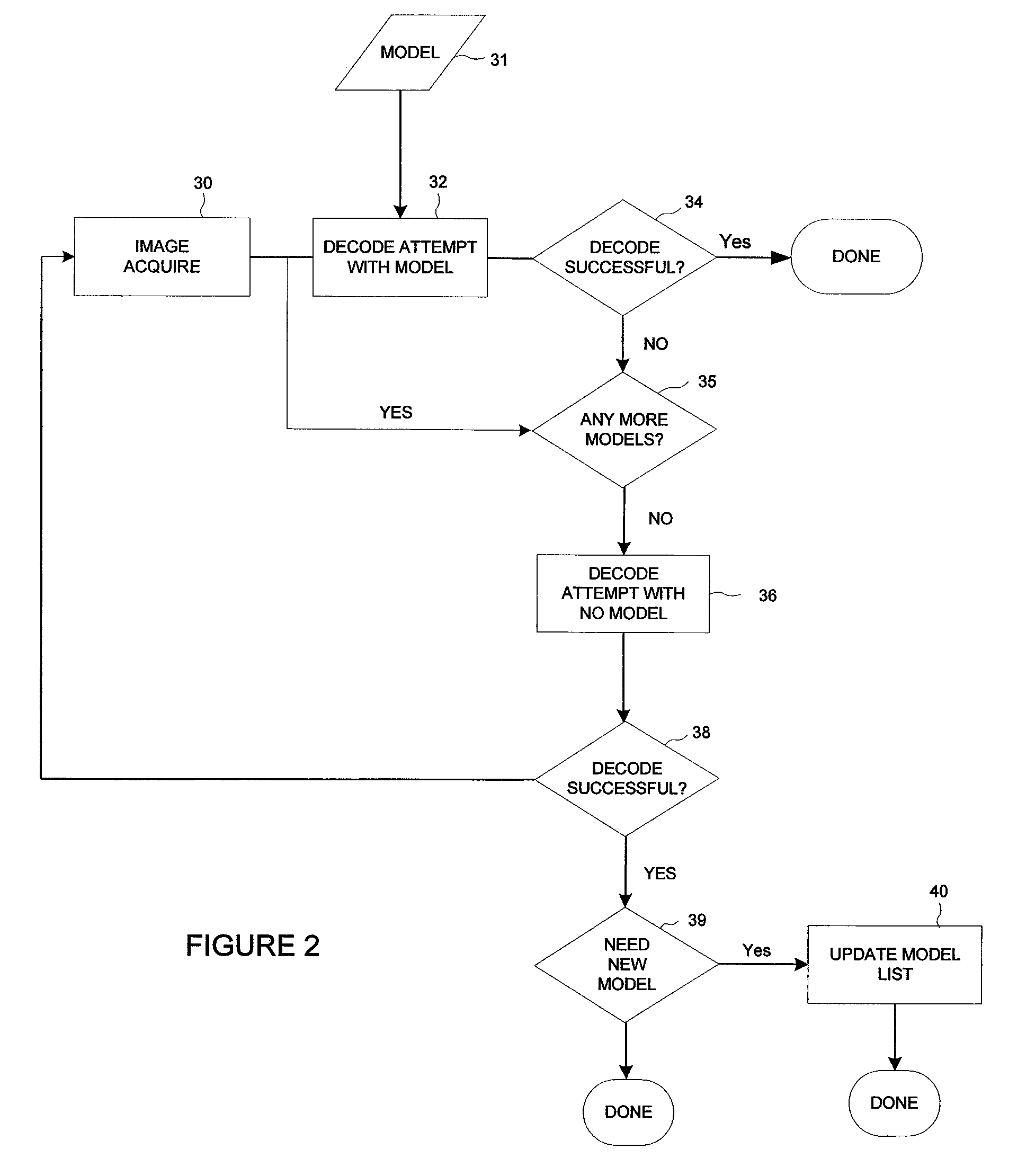Methods and apparatus for reading bar code identifications
a bar code identification and bar code technology, applied in the field of digital data processing, can solve the problems of increasing the challenges facing the makers of bar code readers, and achieve the effect of facilitating the reading of bar codes
- Summary
- Abstract
- Description
- Claims
- Application Information
AI Technical Summary
Benefits of technology
Problems solved by technology
Method used
Image
Examples
Embodiment Construction
[0025]FIG. 1 depicts a system 10 according to the invention for reading 2D bar codes. The system 10 includes a bar code reader 16 that captures a two-dimensional image of a bar code 12 (or bar codes) to be read. The reader 16 can be a charge coupled device (CCD) camera, video camera or other image camera device of the conventional type available in the marketplace. Digital image data (or pixels) generated by the reader 16 represent, in the conventional manner, the image color and / or intensity of each point in the field of view of that capture device—here, a field of view that includes the bar code (or bar codes) 12 and, optionally, aspects of the article 14 (e.g., package, manufactured good, semiconductor wafer, or so forth) on which it / they are disposed. In the illustration, that article is, itself, disposed on a conveyance 15 capable of translating and / or rotating the article, such as may be the case in a warehouse, factory, or other environment where articles bearing bar codes ma...
PUM
 Login to View More
Login to View More Abstract
Description
Claims
Application Information
 Login to View More
Login to View More - R&D
- Intellectual Property
- Life Sciences
- Materials
- Tech Scout
- Unparalleled Data Quality
- Higher Quality Content
- 60% Fewer Hallucinations
Browse by: Latest US Patents, China's latest patents, Technical Efficacy Thesaurus, Application Domain, Technology Topic, Popular Technical Reports.
© 2025 PatSnap. All rights reserved.Legal|Privacy policy|Modern Slavery Act Transparency Statement|Sitemap|About US| Contact US: help@patsnap.com



